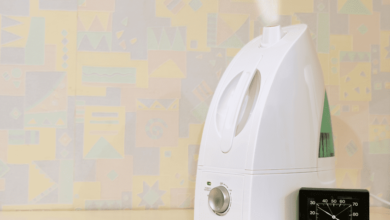Working with Luan Plywood: Everything You Need to Know

Luan plywood is obtained from the Luan tree, a type of Shorea tree also called Meranti or Philippine mahogany. These trees commonly grow in areas on the south pacific rim. The plywood is mixed with several other hardwood species to improve its quality. It has proved to be very beneficial to both manufacturers and consumers due to its consistent density and color, which is more appealing to customers. Also, there is little wastage when peeling or harvesting the wood.
The product can be painted or stained to increase its benefits in indoor use, though it does not work very well for outdoor projects. Luan Plywood has gained lots of popularity in the market, especially in the United States, where it has dominated the market.
Working with Luan Plywood
The plywood is highly flexible and thin; as such, you must understand how to properly cut it. Also, Luna plywood is known to splinter, so a lot of care is needed when cross-cutting the plywood; a saw with fine-toothed blades is the highly recommended equipment for cutting the plywood.
Normal rip blades are most suitable as they reduce the saw marks and minimize the chances of splintering. You are also required to provide support to the plywood while cutting it, especially on the left side of the blade; an outfeed can also come in hardy. Also, when cutting full sheets, it is advisable to look for someone to help you so that you can better take control of the process.
How to Make Long Cuts
If you want to make long cuts use a circular saw; remember to support the luan plywood on both sides and block it properly to prevent accidents. This arrangement helps to provide support in all four positions. Also, when using a circular saw, set your blade for a shallow cut to minimize the friction generated by the blades.
How to Prevent Splintering
When crosscutting the plywood, the surface veneers are subject to splintering; a jigsaw is better for this purpose. To prevent splintering, you can run a sharp line through the cut line such that if you maintain the blades of the saw on that line, there is no possibility of the plywood splintering.
Another alternative way to protect the veneer’s face is cutting the plywood when the reverse side is facing up. If splintering occurs, it will be on the back side, which is always hidden from view. It is also possible to use masking tape to bind the plywood’s surface while cutting. Binding helps to prevent splintering by binding the plywood’s surface together; you will find this method very effective when making curved cuts.
Uses of Luan Plywood
You often find the plywood in measurement in ¼ inches thickness. Still, it is also possible to get it in 1/8 inches’ thickness because high thickness makes it less useful, especially in furniture construction. You will also find the plywood used in side panels or other instances where high mechanical strength is not needed.
Most woodworkers also use Luan plywood to make craft objects, dollhouses, and toys. Due to its delicate surface, the plywood offers a stunning appearance to wooden parts while offering a cost-effective solution.
Luan plywood is also used in areas with extensive bendings, such as curved desks and archways. It is also used as an underlayment material beneath vinyl flooring. The plywood is also seen as a very decent wood in cabinet making, where it is used in backing the sides that need a smooth finish.
Summary
The luan plywood is versatile but very useful among all other types of plywoods. However, it is becoming a rare commodity due to the overexploitation of Shorea trees. The plywood creates a beautiful finish in all types of wood, including furniture and cabinets. When working with plywood, you must be very careful since the plywood is very thin and flexible.
When cross-cutting luan plywood, use a saw with fine-toothed blades. A normal rip blade helps reduce the saw marks. When making long cuts, use a circular saw and remember to support the plywood on both sides and block it with dimensional lumber. Use a jigsaw to prevent splintering while cutting.




